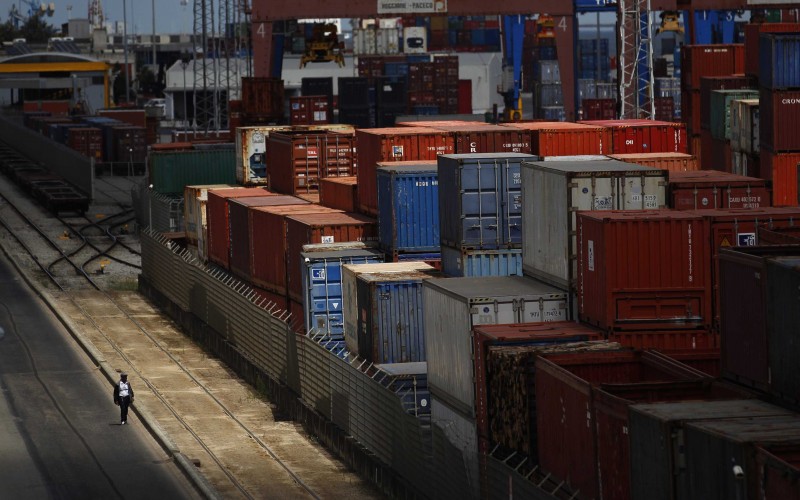With the US trade deficit at a six-year high, analysts have attributed the widening gap to a strong appreciation of the US dollar coupled with labor strikes at ports along the California coast. Is the rising deficit a true economic signal, or just noise?

Last week saw a perfect storm for US trade as the Department of Commerce reported the highest trade deficit since October 2008. The trade deficit ballooned by 43% in the month of March, making it the biggest month-to-month jump in 18 years.
The deficit rose from an initial $35.9 billion in February to a surprising $51.4 billion in March. This comes after the trade gap exhibited a sharp decline in January and February. Meanwhile, exports of US goods grew by a meager 0.9%—making exports a serious issue for the US economy.
Analysts have proposed several reasons for the bad news, but the main culprits seem to be the strong appreciation of the US dollar, and a protracted labor strike at multiple ports along the west coast in the months of January and February.
Strong US Dollar
The dollar exhibited its highest appreciation over the past 12 months, growing approximately 17% while other hard currencies such as the Euro and Japanese Yen hit 12 month lows, depreciating 8% and 2.1% respectively.
This has huge implications on US trade, as it has made American goods and services more expensive for foreign buyers and less competitive in the global market; simultaneously, foreign products were cheaper for US consumers. Indeed, the effects of a strengthening dollar have reverberated so far as to have an impact on US corporate profits.
This, coupled with a dropping demand for petroleum, an unusually harsh winter, and steady employment gains that helped fuel even greater domestic demand for foreign goods, created the perfect storm for a sharp increase in imports.
Weak exports attributed to the strong dollar are only further exacerbated by an overall weak global demand due to Eurozone uncertainty and domestic efforts by China and Japan to stimulate their own economies. Overall, imports increased from $222.1 billion in February to $239.2 billion in March, while exports only increased from $186.2 billion in February to $187.8 billion in March.
US Port Strikes
If the appreciation of the US Dollar serves as the economic rationale for the surging trade deficit, a blip in the form of a worker’s strike may have exacerbated the deficit sufficiently to make it an anomaly.
The data shows that the trade deficit actually fell to a six-year low in February, as billions of dollars’ worth of goods were being withheld and barred from entry due to a standoff over a new labor contract by unionized port workers in Los Angeles and Long Beach, California. Approximately 80% of the cargo traffic these two ports handle are foreign imports.
As the strikes ended in late February and the ports slowly began to return to full capacity, the backlog of imports started to compound and exacerbate the trade deficit. Goods withheld from entry included consumer products such as personal computers, automobiles, cell phones, clothing, and furniture.
The same, however, cannot be said for the weak export numbers, as the strike would not have delayed outgoing goods.
Economy Contracts
Many analysts insist that with the labor strikes over, the trade data will begin to smooth out into the second quarter.
It is important to note, however, that while the strike explains the sudden surge in imports in the month of March after a decline in January and February, it would not have changed the overall first quarter trade deficit. The backlog of imports would just have been spread throughout the months of the first quarter. Therefore, it is difficult to attribute the strike as the sole reason for the soaring trade gap.
According to the report, the year-to-date deficit of goods and services increased by $6.4 billion—or 5.2%.
Estimates suggest that the trade deficit subtracted 1.25 percentage points from GDP growth, which would mean that based on the government’s initial estimate of a 0.2% growth rate, the US economy likely contracted in the first quarter.
All things considered, the appreciation of the dollar likely explains the lack of export growth and surge of imports for the entirety of the first quarter, while the worker strikes in January and February explain the sudden swelling of imports, specifically in March.
Whatever the cause of the surging trade gap, the more important question is how this will affect the Federal Reserve’s decision to raise interest rates. If the trade data does not show signs of improvement by the second quarter, it is likely that the Fed will push off raising interest rates to either late fall or early next year.
sourche: http://globalriskinsights.com/2015/05/us-trade-deficit-soars-to-six-year-high-signal-or-noise/

Δεν υπάρχουν σχόλια:
Δημοσίευση σχολίου